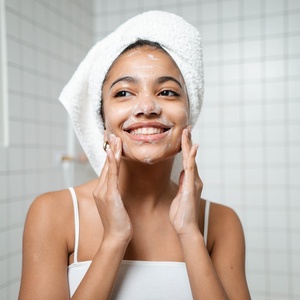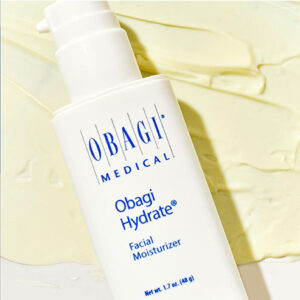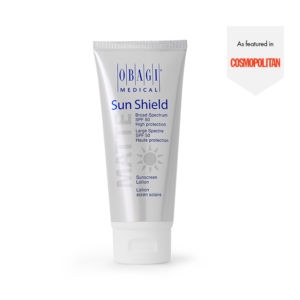
Retinol is a powerful skincare ingredient that you’ve probably heard of many times. Maybe you even use some form of retinoid in your skincare routine, which is great, as the benefits and results can be truly outstanding.
However if you’re using a retinol and not partnering it with the correct ingredients, you might be experiencing some frustrating side effects, including erythema (redness), irritation and dry skin. Read our 3 retinol do’s and don’ts to find out which ingredients make the perfect pairing and which should be avoided immediately.
3 Ingredients That Pair Well With Retinol
Peptides
Retinol has some amazing benefits, one of them being it speeds up skin cell turnover, which in turn reduces fine lines and wrinkles. However, in the process it can make your skin feel dry, so loading up on hydrating biomimetic peptides like Hydromanil will make sure you feel the full advantages of retinol without the dryness.
Combat dryness and boost hydration with Obagi Hydrate®. This best selling daily moisturizer contains Hydromanil™, a peptide that forms a matrix on the skin preventing moisture loss, by locking in the moisture from the shea butter, mango butter and avocado oil, all present in the Obagi Hydrate® formula. This luxury product is clinically proven to provide long lasting hydration for up to 8 hours, making it a definite must-have to use alongside retinol.
SPF
Retinol can make your skin more sensitive to the sun, which is why it’s a no-brainer to include both retinol and SPF in your skincare routine. Due to possible photosensitivity it is often advised to apply retinol based products in the evening, before bed. When you wake up in the morning, finish your skincare routine with a high factor UVA and UVB protective SPF.
A great broad spectrum SPF to keep your skin youthful and protected is the Obagi Sun Shield Matte™ Broad Spectrum SPF 50. This product leaves a matte, shine free finish and uses both chemical and physical UV filters to keep your skin from sun damage. By using this product the morning after you apply retinol the night before, you’ll prevent the breakdown of collagen and elastin, pigmentation and wrinkles, helping your skin look youthful and radiant.
Niacinamide
Niacinamide helps to hydrate the skin, which reduces dryness that is sometimes associated with retinol use. Niacinamide also has great pore size reducing properties, as well as the ability to lighten pigmentation and discolouration. It is best to leave a 5 minute gap between applying niacinamide and retinol so that you can be sure the first product is fully absorbed before applying the second.
A brilliant niacinamide infused product is the Obagi Daily Hydro-Drops™ Facial Serum. This powerhouse serum contains niacinamide, omega fatty acids, hibiscus oil and vitamin B3. The addition of the omega fatty acids helps to restore the skin’s natural moisture barrier, locking in hydration, a great attribute when also applying retinol.
3 Ingredients That You Shouldn’t Use With Retinol
PHAs, BHAs or AHAs
You shouldn’t use any acids alongside retinol, whether its alpha-hydroxy acids, beta-hydroxy acids or poly-hydroxy acids; they’re all a big no no in the skincare rule book!
Retinol exfoliates the skin, revealing brighter, more even skin underneath. Acids also have powerful exfoliating properties, so using both together will irritate your skin, possibly exfoliating beyond the dead skin cell build up and into the top layers of the skin, causing redness, irritation and inflammation.
Benzoyl peroxide
Benzoyl peroxide kills the acne causing bacteria that lives on the surface of the skin, reducing breakouts. Much like acids, benzoyl peroxide also exfoliates the skin to reduce congestion and blocked pores. If used in conjunction with retinol too much exfoliation will occur and you’ll most likely experience some unwelcome irritation.
Vitamin C
Vitamin C is a powerhouse antioxidant that makes a great addition to any skincare routine. However, your skin requires a low pH between 0 to 3.5 to be able to absorb vitamin C. Retinol needs a higher pH level between 5.5 and 6. When layering vitamin C and retinol the pH will balance out, making both products less effective. So although you may not experience any negative side effects, you will not benefit from either ingredients.




